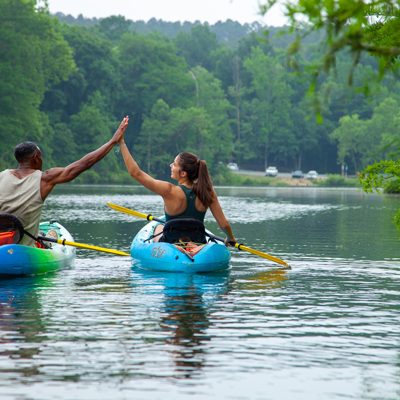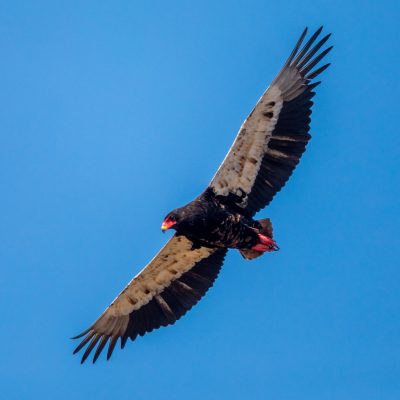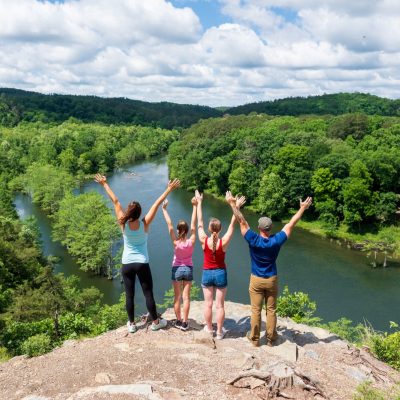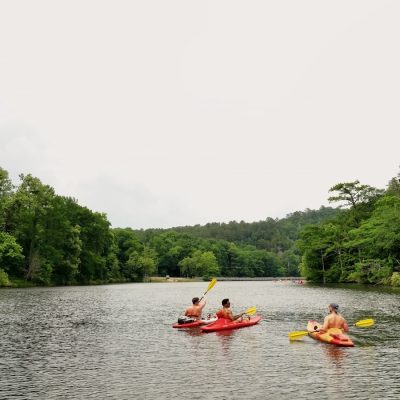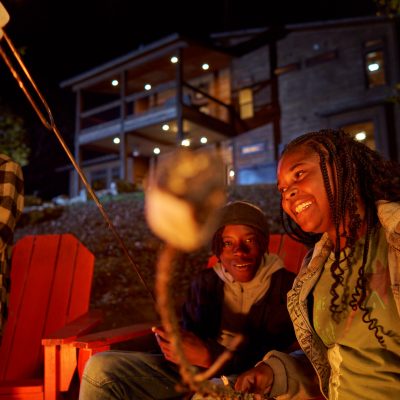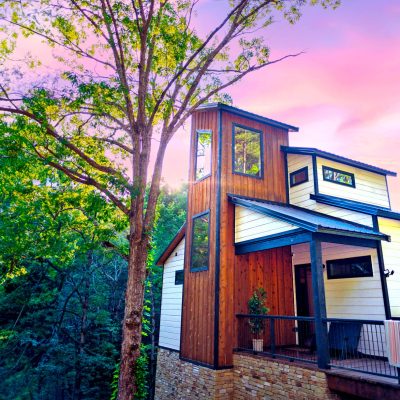Birding is a popular pastime in southeastern Oklahoma, and there’s no better place to spot rare birds than the unique geography and ecosystem found at the Red Slough Wildlife Management Area. Located near Idabel, you’ll find more than 5,814 acres of varied wetland terrain. From mudflats to marshes, to hardwoods and wet prairie lands, the area provides a year-round home for hundreds of types of birds, waterfowl, alligators, and mammals.
The Tulsa Audubon Society calls the Red Slough “one of the hottest recreational destinations for birders and other wildlife enthusiasts in the United States,” and anyone who’s visited knows the opportunity to see rare bird species makes it a must-do on any birder’s bucket list. Come out at first light to tick birds off your state, year, and life lists.
With its marshy wetlands and wading birds, birdwatchers say the climate is more similar to that of the Louisiana coast, Texas, or Florida than to the rest of Oklahoma. Consequently, many of Oklahoma’s rarest birds hang out here, along with several species that simply can’t be spotted anywhere else in the state. So many rare bird species call Red Slough home—at least for part of the year—that birders are likely to see at least one “life bird” during a day trip. And with any luck, it’ll be the first of many.
Types of Birds
So what can you expect to see in Red Slough? To date, 312 bird species have been documented in the area, so there’s no shortage of unique birds to see during your visit. Bald Eagles, though common here, are a favorite. The full list of birds is a comprehensive, impressive resource. The Red Slough is also the only place in Oklahoma where American alligators breed, making hatching season a popular time to visit.
But the coastal-like climate is best known for rare species sightings like Roseate Spoonbill, Purple Gallinule, White Ibis, Wood Stork, Yellow Rail, and Black-Bellied Whistling Duck. You can also expect to spot such stunning sights as Tree Swallows, Barn Swallows, Indigo Buntings, and the highly sought-after, very secretive King Rail. Note: a waterfowl refuge area has been established to protect certain species, and entry to the five reservoirs within it is prohibited from October 15-January 31.
Summer Birds

Look for the Tricolor Heron when bird watching in Beavers Bend.
In summer, Tulsa Audubon says birders are likely to see Purple Gallinules, Least Bitterns, Common Moorhens, Least Terns, Tricolored Heron, White Ibis, Anhingas, Black-bellied Whistling Ducks, King Rails, Roseate Spoonbills, and Wood Storks. As summer turns to fall, Yellow Rails are commonly sighted.
Winter Birds

You can often spot a Sandhill Crane in the winter.
Winter brings new birds to the Slough. During this season, Tulsa Audubon says visitors will likely see Merlins, Golden Eagles, Sandhill Cranes, and Short-Eared Owls. Visitors might also catch a glimpse of the Least Grebe, Glossy Ibis, Crested Caracara, Harris’ Hawk, Trumpeter Swan, Tundra Swan, Swallow-Tailed Kites, American Avocets, Mottled Ducks, Piping Plovers, Prairie Falcons, and Sage Thrasher.
Shorebirds

Many shorebirds live in the Red Slough Wildlife Management Area year-round.
Many shorebirds call the area home: Buff-Breasted Sandpipers, Black-Necked Stilts, White-Rumped Sandpipers, Black-Bellied Plovers, American Golden Plovers, Dunlins, Long-Billed Dowitchers, Hudsonian Godwits, Whimbrels, and Wilson’s Phalaropes.
Getting There
If staying in Broken Bow, take U.S. Highway 259 South to the town of Idabel. From Idabel, continue on U.S. Highway 259 south for 18 miles to State Highway 87. Go east on Highway 87 for three miles. Turn left onto Mudline Road (look for the Getty gas station sign) and you’ll be in prime birdwatching territory.
To find your way around within the wildlife management area, grab a map or use this reference. There are no fees to enter Red Slough, and once there, platforms and walkways built throughout Red Slough allow birders to get a better look at the species flying through the area and resting on the water. Some platforms are even elevated to put you on a perch high above the wildlife below.
What to Pack
Binoculars:
At a distance, it’s tough to tell birds apart. For amateur and serious birders alike, good binoculars are key. You’ll want a pair with a crisp field of view and high magnification rate to see fast moving, far away birds easily.
Boots:
Thanks to Beavers Bend’s wet terrain, you’ll want to wear some waterproof boots to get as close to the action as possible. When birding on the levees in the morning, grass is usually wet from the night, and tennis shoes soak through very quickly. Golashes, work boots, or hiking boots are usually most appropriate, along with tall socks.
Field Guide:
Bring along a guidebook to help you identify birds as you spot them. A great choice for North America is the National Geographic Field Guide to the Birds of North America, which includes 960 species, and plenty of photos and information to help you identify every bird you see. Smartphone birding apps like iBird Pro are another great resource for identifying birds in the field.
Grab a Guide:
Enlisting the help of a local guide is highly suggested, and Beavers Bend offers plenty of free resources. A local guide of some kind also helps with finding your way around an area and identifying local birds. Most guided trips will leave around 1:00 pm, but birders are welcome to set their own schedule with their guide. Check out our bird watching section for inside information on local birding, or The Tulsa Audubon’s Guide to Birding in Oklahoma.
Clothing:
Birds are sensitive to color, so opt for earth-toned clothing. Be sure to dress warmly, as you’ll be standing in place much of the time.
Ready to pack your bags and head for birder’s paradise? Head this way to start planning your next trip around the Beavers Bend.
Originally written by RootsRated for Beavers Bend.






